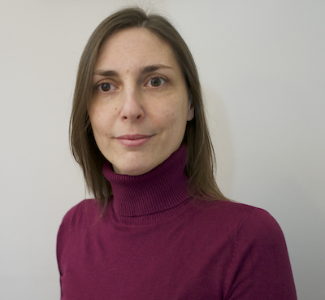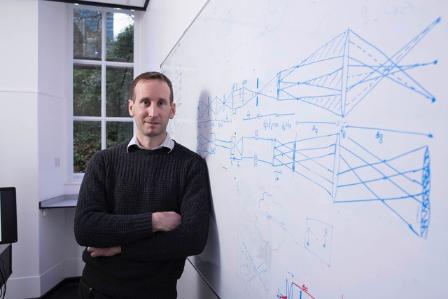Revolutionising Biomedical Imaging
Published: 22 July 2021
Read more
How will quantum imaging technology revolutionise healthcare?
The grand challenge of modern medicine is to be able to see and then diagnose disease at a cellular and genetic level. Finding solutions to biomedical imaging at the nanoscale would drastically improve the chance of developing effective cures and save lives.
Over the last 6 months QuantIC’s Partnership Resource Fund has awarded more than £210k towards finding quantum solutions to biomedical imaging.
3D imaging of biological tissue
The Accelerated Development Fund (ADF) is a £2m pot designed to bring new imaging research ideas into QuantIC. Earlier this year QuantIC awarded the first ADF grant to a team led by Dr Lucia Caspani from the University of Strathclyde for her work on the 3D imaging of biological tissue.

The team, led by Dr Caspani, will be working with colleague’s Dr Matteo Clerici and Dr Caroline Müllenbroich from the University of Glasgow to develop a new imaging technique that enables 3D imaging of even the most fragile and delicate specimens.
Many pioneering advances in medicine and biology require observation of the microscopic world with high resolution and without damaging the specimen. One of the most widespread techniques used for this purpose is multiphoton fluorescence microscopy, which allows full 3D imaging via “optical sectioning” i.e. imaging of planes within the sample, without the need for physical slicing. The project will focus on overcoming a major limitation of this technique.
Dr Caspani said “The current issue with multiphoton fluorescence microscopy resides in the excitation of fluorescence. The lasers required are so powerful that they can damage or alter delicate biological samples. In our project we aim to exploit the unique properties of quantum entanglement to improve the probability of exciting fluorescence by several orders of magnitude. We expect our quantum enhanced microscope to require illumination powers ~1000 times lower than the classical counterpart, enabling 3D imaging of even the most fragile and delicate specimens”.
Experimentalists around the world are testing this hypothesis and the race is on to the development of the first quantum-enhanced fluorescence microscope. Such a microscope should maintain the strengths of a standard multiphoton fluorescence imaging system (high 3D resolution and molecular specificity) yet with an increased penetration depth and signal-to-background ratio. These advantages could enable deeper imaging at low illumination levels, giving access to sub-cortical brain regions that are fundamental for studies into learning, memory and degenerative neural conditions such as Alzheimer’s disease.
3D fluorescence lifetime imaging

In parallel, Dr Jonathan Taylor from the University of Glasgow and QuantIC co-investigator Professor Daniele Faccio were awarded an Industrial Partnership Fund (IPF) award from QuantIC to advance a new two-photon microscopy technology for high-speed 3D fluorescence lifetime imaging applications.
The team aim to develop new technology that could enable rapid photon-efficient Fluorescence Lifetime Imaging Microscopy (FLIM) in 3D samples. If successful, this technology could enable molecular proximity sensing in living cells on nanometer scales. This is important in understanding the dynamics of cancer cell migration and metastasis, ultimately leading to improved understanding and treatment of cancer in human medicine and healthcare.
Working in collaboration with industry partners Horiba and Chromacity this project could revolutionise biomedical imaging.
Ultra-thin endoscopes for minimal invasive monitoring.
Professor Miles Padgett and his research team were also awarded an IPF grant to develop a single-fibre endoscope camera that can provide minimally invasive imaging.
Traditional endoscopes are based on bundles of optical fibres. Each pixel in the image requires its own individual fibre, meaning that the resulting fibre bundle is many millimetres in diameter.
By contrast Prof. Padgett’s team have shown it is possible to make a single-fibre endoscope the width of a human hair that can see in 3D. The project aims to build a transportable device that can produce minimally invasive images. Applications would naturally include healthcare but a camera this small could also be utilised in a range of sectors including industrial and defence and security imaging.
QuantIC and Healthcare Technology
When asked about the application of quantum technology in the field of healthcare QuantIC Director, Prof Steve Beaumont, said
“These awards are all excellent examples of the calibre of research and industrial collaboration that we are seeing in Phase 2 of the UK National Quantum Technology Programme. We are always looking for projects that can accelerate the application of our world-class QuantIC research into commercial applications.”
Further information on how QuantIC research could advance imaging and sensing in healthcare can be found here.
First published: 22 July 2021
<< Healthcare
QuantIC's Business Development Team are happy to talk to both industry, with an interest in our technology, and researchers who may wish to collaborate on this theme.
info@quantic.ac.uk


